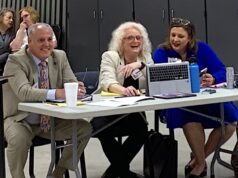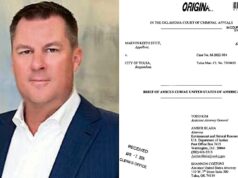
Community schools are neighborhood hubs that provide families with access to a health care clinic in the school; connect parents to job-training opportunities; offer daycare for the children of teenage mothers; and extend inter-generational help in providing mental health and social services. For a nationally recognized example of such teamwork, look no further than Tulsa’s Union Public Schools (UPS) district, which I’ve written about before.
UPS avoided the top-down, micromanaging that is far too common across the nation and locally. Instead, it actually asked principals what they wanted: a reading-program specialist, for example, or a community-school coordinator.
Diversity was also a key to the design and implementation of Union’s community school model. Union’s successful creation of a “Whole Child/Whole District” system was an “organic process,” not a “linear path” but a process which was “always circling back to the hub – community schools.” It grew “cross-generational leadership and friendships.” And, “Union is still working on its philosophy and implementation solutions emerge from the needs they discover.”
So, what else did Union choose?
- Recognizing the overwhelming evidence on the large effects of high-quality early education: The 16,000 student district serves 300 3-year-olds.
- Respecting parents and valuing cross-generational, family-oriented solutions, Union serves 300 juniors and seniors in its Career Connect internship program (see video above), and 3,000 adults in its continuing education programs.
- UPS sees STEM (science, technology, engineering and math) learning as a “social justice strategy.” Project-based, hands-on STEM classes may start with students analyzing the DNA from strawberries and later end with students tracing their own DNA.
- It also serves 5,000 English-language learners whom the UPS sees as being “on the cusp of being bilingual.”
- UPS creates systems of “looping” counselors, principals and teachers so adults stick with their students as they progress through school. Moreover, the practice of shared leadership means that adults are “always modeling cooperation and collaboration.”
- Even as corporate school reform has narrowed the curriculum for many or most schools, UPS recognizes that extracurricular activities are essential. So, it expands them, in part, with the help of older students coaching and mentoring younger kids. UPS views this holistic learning as “co-curricular, as opposed to extracurricular.”
I suspect educators, students, and patrons in Oklahoma City would overwhelmingly make the same choices as their UPS counterparts.
Virtual learning
The UPS district has also developed a system of virtual learning that maximizes the benefits of individualized online instruction while minimizing its downsides.
It starts with respect: Instructors nurture a collegiate atmosphere. Administrators don’t skip the essential first step: creating cultures for personalized (instead of generic) learning. After laying this foundation, virtual school students don’t abuse their freedom while working in soft couches as they follow their passions.
Teamwork makes results financially possible
In February 2017, UPS became the five-time winner of the 6A Oklahoma Promise state championship for providing university scholarships for students from families whose annual income is $50,000 or less. It will soon open the Community Health Connection clinic and Ellen Ochoa Elementary School partnership, which will be the nation’s largest community health/community school hub outside of the Harlem Children’s Zone.
And that brings us back to the teamwork, ranging from community gardening nonprofits to the Kaiser Family Foundation, that makes this greatness financially possible. The district’s first clinic was formed in partnership with the OU-Tulsa School of Community Health Center, meaning that UPS only had to foot the bill for remodeling a faculty lounge.
On a wonkier note, UPS uses the new freedom provided by federal Title I funding for its student supports, and its partnerships allow the passage of bond issues that even fund learning materials for dual-college enrollment students.
In other words, Tulsa’s UPS district made school improvement a team process, and its students – as well as the entire community – are benefiting from it.




















